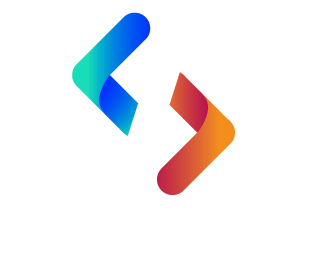Content optimization today must combine the user’s perspective and a solid understanding of SEO. This is how to achieve the perfect balance.
Google’s useful content updates is now being released, and even though it wasn’t as impactful as people had hoped for however, it has certainly focused our attention on the process of reviewing and improving content.
What we’ve discovered has been that Google is taking more moves to provide the content written by people, by people. In this light optimizing content to appeal to individuals and search engines must be feasible.
These are the top recommendations to improve your website content to get better results in search and happy readers.
1. Check the accessibility
Examining readability is one of my top tips for optimizing online content.
On the internet We learn and absorb information differently than we do in printed form. Simple sentences that are short and concise are simpler to process.
The U.S., the average reading age is between 12 and 14 year old.
Within the U.K. Guidelines in the U.K. require us to reduce our writing in a way that an 8-year-old can comprehend. In the U.K.’s Office for National Statistics suggests writing in a manner that is easy to comprehend for all readers.
Making this a reality isn’t as easy as it appears and is often ignored.
Search engines are awestruck by “readable” content, too. They make use of NLP, or natural technology for processing language (NLP) to analyze language using rules of linguistics to comprehend the connections between words.
The meaning intended can be lost if the relations are too complex.
the Google software for NLP recognizes “sales funnel” and “target audience” as the most significant entities. However, this paragraph is designed to concentrate on e-commerce PPC management.
I’ll reduce it to a score of seven (Good) and then run the latest version through the Google NLP tool:
This is not only more straightforward to follow however, it’s additionally more relevant to the subject that was intended.
2. Make sure that the language is simple, precise and succinct
As a follow-up to reading comprehension, it’s important to ensure that your language is as precise and concise as you can.
Get rid of any unnecessary or complicated terms.
Make sure to write your thoughts in their most basic form, while keeping the pace and rhythm that keeps things exciting.
This will allow readers to read your blog posts and will aid search engines in processing it.
3. Make use of synonyms and close variants
Repetition of the same terms and phrases aren’t always a great strategy. It makes content difficult to read and may appear untrustworthy to an audience that is discerning.
Enhance your content by updating the words you use frequently to their equivalents. This will result in a more enjoyable and interesting reading experience.
It also provides the search engine with additional context details and help them beware of the temptation to use too many certain keywords , which could cause poor performance in search results.
Synonyms can strengthen the subject matter you’re writing about by offering a variety of references. This can provide you with more options for ranking, too.
For instance in Search Engine Land’s guide ” What is PPC?” ranks for many different synonyms and variations of PPC, such as paid search and search engine marketing. pay-per-click marketing advertisement in search, pay-per click search and many more.
Information come from Sistrix
4. Include related entities in your research and
Each piece of content is composed of entities. Both humans and search engines are aware of the connections between numerous entities.
People have learned through time for instance the fact the fact that Buckingham Palace is a royal residence that is located within London, England:
This is because it is linked to certain entities such as London (location) as well as The late queen Elizabeth II (person) as well as certain occasions, just to name a the most prominent.
While some relationships between entities like those are clearly defined and obvious while others are less obvious. This is why it’s essential to study the associations between entities and examine your connections in your content.
Making the right connections can help to create a larger picture and provides the context for your subject. This can be beneficial for your readers and for search engines. When you’ve written regarding Buckingham Palace but failed to mention the Royal Family, your content is not complete.
However, entity relationships can help make sense, too. If you’re writing about the historical persona of Anne Hathaway, related entities such as William Shakespeare and Stratford Upon Avon give an understanding. An article about Anne Hathaway, the modern-day film star, could link entities such as films and actors, Academy Awards and New York City.
Created using Diffbot Natural Language API Demo
If you’re able to include various relevant sources within your writing, it enhances the quality of your content. It gives search engines more references to boost their confidence regarding the topic you’re addressing and also shows your readers that you’ve carefully researched the subject and presented them with a useful source.
5. Your content should be structured
It is important to ensure that your content follows an orderly, coherent structure. This will make it easier for users to understand and search engines to understand.
For instance for instance, this Ideal Home article about how to load dishwashers is organized in a straightforward and efficient manner. It offers general advice on getting the best results and then considers the top and lower racks.
Other, similar articles provide an array of information. While they’re useful, their structure isn’t as well-organized and easy to follow.
6. Use headings
A strong heading structure is essential for search engines and people alike.
Clear, informative headings aid busy readers to read your text faster or skip to areas they’re most interested in.
Correctly formatted headings are crucial for accessibility. They are utilized in assistive technologies, therefore proper headings help screens to move efficiently and comprehend your content in the way it was intended.
Like humans are, search engines also love headingstoo.
Clear H1, H2 and lower-level headings aid search engines know what the page’s content is the content of each paragraph and what topics are relevant and how they connect to one another.
Mordy Oberstein has recently shared some very interesting results about the way that improving the clarity of headings made it easier for his material to be indexed.
This is a great illustration of how crucial well-written, informative headings are to the success of content.
7. Make sure to format your documents properly
The way you structure content will help communicate the message of the content.
A number list could be a step-by step process or a system of ranking. Bullet points are typically the list of items having equally important. Bold or italic fonts help the items make an impression and gives the items more the attention they deserve.
You’re reading this post now and I’ve given you 25 points. Therefore, I labeled them 1-25 in order to reinforce the message that is in the headline.
The proper formatting will allow readers read your material exactly as you wanted. It also makes it simpler to process and scan. It also aids search engines, too, since they can also understand these different formats, as well as the definitions.
For instance, certain formatting can suggest a class such as an address. Tables, for instance, can suggest certain connections. Charts are able to show averages and ranges.
If I’m curious about the weather conditions in London all year round (perhaps I’m planning to go there) tables and charts convey this information better than text:
Screenshots taken from Holiday Weather
This formatting can help to reinforce the message. It makes a better source for both people as well as search engines by configuring elements the most efficiently.
8. Make use of a content section and jump links
If you’re creating long-form content and want to include a section on contents that includes jump links to the main section is an effective optimization.
This allows readers to navigate between sections more easily and get the information they require. This improves the users’ experience and helps your content be more digestible.
From an SEO viewpoint, these distinct internal links can help to clarify the purpose of specific sections, which could increase the importance of the passages that are ranked in long-form content.
“Very specific” searches can be the most difficult to achieve because sometimes the one sentence that you need to answer could be hidden in the web page. We’ve recently made significant progress in our ranking, and we’re now capable of determining the significance of certain passages. When we understand specific passages and the importance of the entire page, we’re able to locate the information you’re searching for.”
Thus, search engines are able to recognize relevant passages and associate them to queries, but it’s certainly not a bad idea to direct them to the right direction by providing an organized content section.
9. Make sure you choose the most useful option over word count
If you’re creating or enhancing content, try to focus on the information that is beneficial for your readers instead of just completing an amount of words.
The majority of people can read through text written in order to meet an amount of words. Google can as well. The content is empty and has no meaning.
Google’s helpful guidelines for content provide:
“Are you writing according to an exact word count because you’ve read or heard that Google has the preferred word count? (No we do not).”
They clearly are watching this, too.
If you are able to provide sufficient information to satisfy the people you want to reach people, they’ll appreciate it. You’ll steer clear of empty words or information just to be there.
10. Research your search terms
Good content should always be built on research. We often think that you know exactly what your viewers want However, as content producers may have a biased view.
This is where the data from search queries is available. It’s an incredible source of information about what people are seeking. Although it’s crucial to utilize this with care however, it should not be overlooked.
Understanding the way people search for subjects we’re writing about is vital to optimizing content. Your readers will notice your content more relevant to what they were searching for in order to find your content as well as search engines display their content within the proper context.
Here’s an example of content that is in a specialization area that was optimized on the basis of the data from a search engine and then republished to the new URL:
Information come from Sistrix
The visibility of the page has increased significantly in the past few months, and Google Analytics shows a lower bounce rate and exit rate on the new page as compared to the prior version. The optimized content is more efficient for finding through search engines and for readers too.
11. Find the appropriate scope
Think about where your content begins and where it ends. Can it be merged with other resources to create the best and more efficient asset? Should it be broken into bite-sized chunks?
When optimizing your content, it’s more beneficial for both users as well as search engines to take into account the potential. Anything that is very short could be considered to be thin content from a search standpoint and not enough for the readers.
On the other hand an extremely lengthy resource may be easier to comprehend by sections or parts which link. By breaking it down, you can create the appearance of a set of targeted parts of content that are more effective in terms of search results because they’re more well-defined.
For instance the Search Engine Land tutorial on SEO provides high-level information and also includes hyperlinks to more detailed sections on sub-topics. It is impossible to cover everything related to SEO in SEO is within one resource would be too large an area.
12. Give clear answers to any questions
If you’re asked an inquiry in your content, give the answer in a clear manner. Do not confuse or waffle.
Utilize the appropriate units or categories to answer your question. Consider the answer you’d like discover!
For instance this passage provides a direct answer to an inquiry in a simple and effective way:
(Disclosure: GeoSLAM is a client currently of mine. )
This one provides simple answers using the anticipated temperature measurements in Celsius as well as Fahrenheit
A majority of people use search engines to get quick answers to their queries. They do not want to read a debate. They would like to have access to an unambiguous and definitive source.
13. Make use of images to aid in understanding
Visual learners are by nature, so think about expanding or updating your photos to improve the quality of your content.
Images that look great can improve your search engine performance, too. They can improve click-through rates and be displayed in image search results and boost your presence on SERPs.
The most important thing is to ensure that your image adds something of value.
- Can it be helpful to show something that is difficult to comprehend?
- Does it make a crucial aspect more memorable, or more emotional?
If it is you’re likely to find it adding value to your message.
For instance, this tech piece on LiDAR technology helps understanding by using simple diagrams:
14. Include videos to enhance the experience
In the year 2020, more than 3 billion Internet users were watching online video. The number is projected to rise to 3.5 billion by the end of next year Based on the Statista figures. Therefore, if you find that videos are appropriate for supporting or improving you content to be considered as part of your optimization strategy.
People prefer to watch instead of reading, and so videos enhance the overall experience.
You’ll only reap the real benefits if you make your own original video content. If your budget won’t go to this extent, embedding valuable video content created by other producers is an alternative.
In the end, creating a more effective quality content source is our goal and could bring other benefits, such as increased share and backlinks.
15. Examine the internal hyperlinks
If you’re optimizing content for the web be sure to consider internal links.
Does your content connect to other helpful internal resources? Do other internal pages have links to it?
Improved internal linking improves readers’ experience as it lets them discover more information about a subject of interest. It’s also crucial for search engines to help in the discovery of content, its relevance and connections to current events.
This year, Google’s John Mueller explained:
- “It’s something that internal linking is extremely important for SEO. I believe it’s among the most important things is possible on a site to guide Google and help visitors navigate to pages you consider important. What you consider to be important is completely dependent on you. You may decide to create important things in areas where you earn the most cash or you can decide to make things crucial in areas where you’re your strongest rival or even the most vulnerable competitor. Internal linking lets you concentrate your efforts on those specific directions and sections of your website.”
16. Update external links
The addition of external links to your site is a great way to improve and enhance.
It could seem odd initially. What is the reason you should direct your readers to a different site?
There are many advantages to this method with care.
Your content will be more credible and useful when you support your assertions, statistics or even quotes with a reliable external source. They can also be beneficial by providing your readers with the ability to quickly access additional details.
However, these require regular checks to ensure that you’re sending readers to the correct source.
Relevant, clear sourcing is also an indication of your expertise in the subject, something search engines like. They also provide context to help to establish the link between your web content on a particular area and other experts or authority websites that provide information on the subject.
17. Give examples
An excellent way to enhance your writing is to include concrete examples. Are there areas that can be better explained by showing how something functions instead of simply explaining the process using words?
There are plenty of examples throughout this post to assist you in understanding my ideas. They support my ideas by illustrating a visual representation of the ideas in the real world, making it much easier to apply it to the content you create.
A visual representation of your idea in action increases credibility and makes the idea more engaging and useful.
18. Ask experts
If you’ve written thought articles or other content that addresses an objective question it is possible to enhance it by consulting experts in the area.
Expert quotes which are clearly referenced will improve the E-A-T signaling for search engines, proving that you have subject matter experts in the. Readers will gain the benefits of a informed argument and will also be able to recognize the importance of the industry’s expertise.
It is possible that you will benefit from the ability to get endless backlinks and social activities by the experts in the field.
This article on Google penalties by Ahrefs is an excellent illustration of reaching out expert experts who are qualified to provide value:
It’s gained backlinks from more than 212 linking domains. Take a check out the recent rise in traffic after September’s major updates (marker H).
Information comes from Sistrix
19. Find a fresh angle
Bring value to the content you write by making certain to take a different approach to a topic. If you’re merely writing something that’s been discussed numerous times before, it’s unlikely to create anything new or worthwhile.
Google’s helpful guidelines for content stipulate that you must stay clear of “mainly simply reiterating what other people have to say, without any worth.”
If you’re looking for older content you wish to optimize maybe you can take it in a new view or gain more knowledge about the subject.
You could conduct your own research, experiment with something or even ask an expert for more information as described earlier.
20. Include data
While reviewing your content take note of whether you’ve claimed that you can be supported by data. The inclusion of facts and figures increases trust and shows the reader that you’ve thoroughly researched the subject.
From a search standpoint from a search perspective, adding relevant information could be a good way to create external links. It’s possible to refer to useful information posted on sites that are authoritative within your field.
If you’re sharing your own personal data There’s a good chance that other authors writing about a subject will refer to your site to prove their own assertions in the near future.
This study, for instance, which compares more than 2,000 digital PR articles has gained a variety of relevant backlinks from websites of industry within a short period of time thanks in part to unique and helpful and fascinating data that was provided.
21. Keep it current
The process of optimizing content never stops and it is essential to ensure that your content is up-to-date. Through a periodic review, you will keep your users from accessing information that may offer outdated guidance.
Search engines consider freshness as a factor in ranking and therefore they are more likely to rank content that’s regularly maintained and current. Research conducted of Botify have proven this, even though it’s a complicated problem.
One of the e-commerce sites I was working on had an increase in traffic on one of the pages, and after analyzing the data, I realized that “prices begin at” was included in the text, however the minimum price was different. After adjusting the price, the site’s performance was restored to the previous levels.
22. Stay up-to-date
You must ensure that the topic of your article is relevant to your field of specialization.
Content that isn’t a part from the main subject could find it confusing or and may fail to trust the information.
Search engines are striving for improving user experience, therefore they are mirrored in this. I’ve performed a number of content audits in recent months on different kinds of sites.
The content on a site generally reveals lots, however one of the main conclusions has always been that content that is relevant performs better than non-related content.
There are a variety of reasons for this. In the majority of cases the content is more likely to be of higher quality when subject matter experts write it. However, the connections between pages are also important.
Content clustering shows a range of knowledge on a subject that connects to other topics and can help you establish authority in your topic over time. I discussed this in greater depth in my latest article about how to make use of connections within SEO.
23. Make sure you take your time.
Understanding the impact of optimization of content on users and search engines alike requires time.
The average time required for writing a blog entry is only four hours in total and has grown by 67% in 2014, according to a massive study conducted by Orbit Media shows.
This is a clear indication that the quality, the amount of detail, and the expertise required are constantly getting better. Some older content may need additional time to be optimized and brought up to date with current standards.
If you’re looking to do a the job right, allow yourself the time to create your content and improve it.
24. Review the results
If you’re working on optimizing your content, make use of results to help you. The data will give you valuable insight regarding what’s working and the way people interact on your site. It’s important to study both.
This page, optimized with information taken from Google Search Console and Google Analytics It has performed better after optimizing. The number of impressions has increased by 359%, while clicks have grown by 433%..
Data from the Google Search Console
Google Analytics shows that the average time on the page has increased, suggesting that the refresh of the content does not just bring in more traffic , but also captivating viewers.
25. Make sure to check and then again
Check grammar, spell check, and fact checking.
Perhaps you didn’t notice something on the first try and published content that has errors. The mistakes can cause a loss of confidence with your readers. They may also hinder the performance of your search engine.
I consider it extremely valuable to have a process for proofing that is in place within my group. It’s easier to identify mistakes of others and examine the content from a practical perspective when you’ve never created the content yourself.
Search Engine Optimization and Humanity
There’s never been a better time to strike the right balance between improving content for people and search engines.
A good mix is to use a user-first strategy with the foundation of SEO.
Both should be considered when improving the quality of your content.
Search engines are essential for driving people to your website However, you don’t want readers to be disappointed once they reach your site.
Be aware of both Search engines and readers will collaborate to produce outstanding results.





